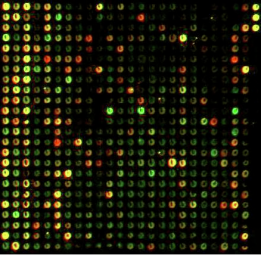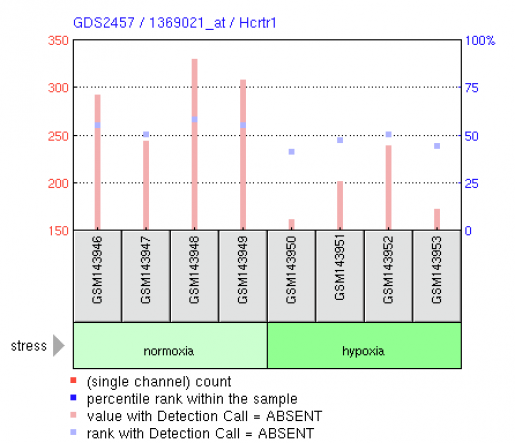This web page was produced as an assignment for Genetics 677, an undergraduate course at UW-Madison
Microarray Analysis
General information
A DNA microarray is a useful high-throughput technology that can be used to measure changes in gene expression between two tissues. These arrays can also be used to resequence mutant genomes and detect single nucleotide polymorphisms.
Gene expression omnibus (GEO) is a large public storage website that houses countless microarray data from different studies. To use this website, all one must do is type in the gene of interest into the query box and conduct a search. Using GEO (Gene Expression Omnibus) I conducted a gene profile search for hcrtr1. The search returned many results, however, none of the experiment results were dealing with the hypocretin receptor's function in narcolepsy. After that, I searched for narcolepsy in Datasets which is a keyword search. That returned one experiment in which they tested transgenic mice. No microarray was done for that experiment.
Gene expression omnibus (GEO) is a large public storage website that houses countless microarray data from different studies. To use this website, all one must do is type in the gene of interest into the query box and conduct a search. Using GEO (Gene Expression Omnibus) I conducted a gene profile search for hcrtr1. The search returned many results, however, none of the experiment results were dealing with the hypocretin receptor's function in narcolepsy. After that, I searched for narcolepsy in Datasets which is a keyword search. That returned one experiment in which they tested transgenic mice. No microarray was done for that experiment.
Hypoxia
Upon receiving no results for experiments that have microarray data relating hcrtr1 with narcolepsy, I decided to focus on an experiment which analyzed adrenal glands from rats exposed to hypoxia from birth. I found this interesting, because from my protein interactions STRING model, Hypoxia-inducible factor 1 alpha (HIF-1 alpha) was shown to interact with the hypocretin receptor 1. This protein functions as a transcriptional regulator of the body's response to hypoxia, including the functioning of metabolism. If this protein functions to control metabolism, then it might have a role in regulating the energy of the body and maybe promoting wakefulness and sleep.
This experiment found decreased expression of the hcrtr1 gene in rats exposed to hypoxia. Figure 1 depicts the results. While this does not have a direct effect on hcrtr1's role in causing narcolepsy, this information is useful in relating hcrtr1's expression levels to different environmental stresses. This in turn may represent a relationship to HIF-1 alpha protein function. In the end, knowing everything we can about hcrtr1 including variation of expression when exposed to different environmental stresses, and it's relationships with other proteins may help us discover the big picture in how it affects humans narcoleptic humans.
This experiment found decreased expression of the hcrtr1 gene in rats exposed to hypoxia. Figure 1 depicts the results. While this does not have a direct effect on hcrtr1's role in causing narcolepsy, this information is useful in relating hcrtr1's expression levels to different environmental stresses. This in turn may represent a relationship to HIF-1 alpha protein function. In the end, knowing everything we can about hcrtr1 including variation of expression when exposed to different environmental stresses, and it's relationships with other proteins may help us discover the big picture in how it affects humans narcoleptic humans.
Figure 1: animals exposed to hypoxia on the right. Hypoxia is a condition where the body is deprived of an adequate oxygen supply. Link to graph.
Future studies
While the data provided by this experiment might prove useful, an experiment where expression of hcrtr1 was analyzed in narcoleptic patients would be much more beneficial to our cause.
References:
(1) GEO website
(2) Bruder ED, Lee JJ, Widmaier EP, Raff H. Microarray and real-time PCR analysis of adrenal gland gene expression in the 7-day-old rat: effects of hypoxia from birth. Physiol Genomics 2007 Apr 24;29(2):193-200. PMID: 17213367
(3) Microarray image at top: click here.
(2) Bruder ED, Lee JJ, Widmaier EP, Raff H. Microarray and real-time PCR analysis of adrenal gland gene expression in the 7-day-old rat: effects of hypoxia from birth. Physiol Genomics 2007 Apr 24;29(2):193-200. PMID: 17213367
(3) Microarray image at top: click here.
Eric Suchy, Email: [email protected], last updated: May 15, 2010


